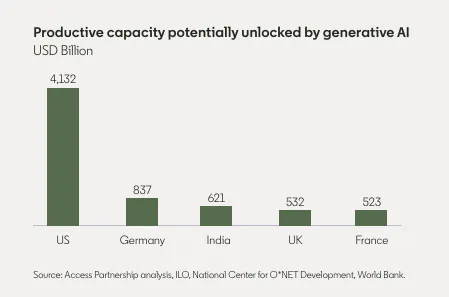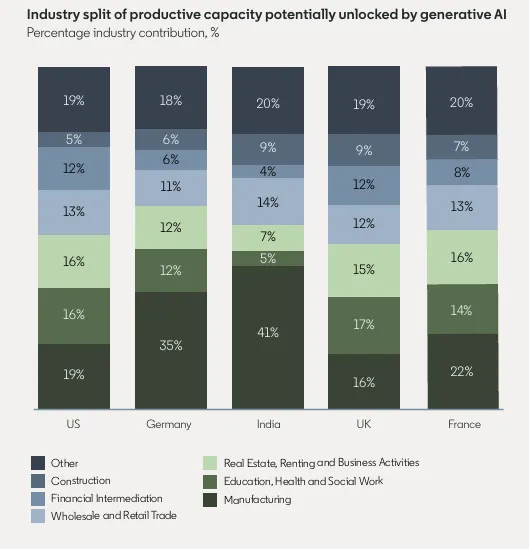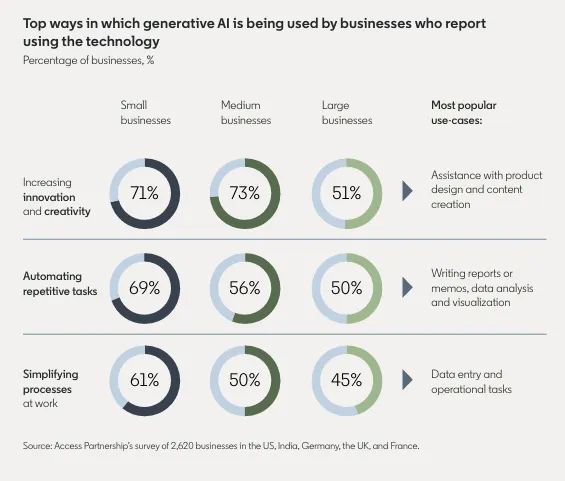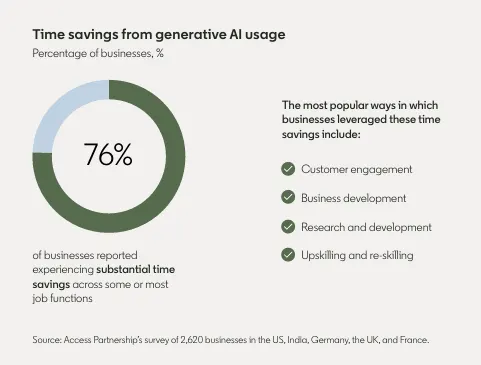In the event you hadn’t seen, LinkedIn is tremendous eager on gen AI, which is why it’s been injecting AI instruments into each aspect that it could throughout the app.
On the identical time, it’s additionally seeking to assist its members capitalize on the alternatives of the generative AI wave, which appears set to have a significant affect on a broad vary of industries over the approaching years.
That’s the main target of LinkedIn’s newest financial affect report, which explores the rising use of AI, together with which industries and economies are extra readily adopting AI instruments, and the way companies must be seeking to construct AI methods and coaching into their strategy.
You’ll be able to obtain the total report right here, however on this put up, we’ll check out a number of the key notes.
First off, LinkedIn outlines its rising deal with AI, and why it sees this as a crucial aspect for its membership:
“At LinkedIn, our ambition is to assist staff, companies, and governments form AI into a robust lever for human prosperity. As many nations face development and competitiveness challenges, GAI could be the catalyst to drive innovation, and speed up development.”
Certainly, LinkedIn says that 75% of firms which have included generative AI instruments into their methods have seen vital time financial savings, in addition to income will increase above 10% on common.
However adoption of AI instruments remains to be largely centered round massive enterprise, which might put smaller organizations at a drawback.
“Regardless of its many advantages, GAI adoption stays low in lots of nations, and small and medium companies (SMBs) – the spine of the worldwide economic system – are being outpaced by giant firms. SMBs symbolize greater than 90% of companies and 50% of staff worldwide. International locations that shut the SMB adoption hole stand to realize vital financial advantages.”
The report appears at how totally different manufacturers and areas can enhance their adoption of AI instruments to maximise the potential profit.
And in response to LinkedIn, it’s the U.S. that stands to profit essentially the most:

As you’ll be able to see on this chart, LinkedIn says that American-based firms, primarily based on its Financial Graph information, look set to reap essentially the most advantages from gen AI, which is predicated on the way it’s at present prone to be utilized throughout totally different parts.

But it’s not full automation that these instruments are offering. LinkedIn says that the true strengths of generative AI lie in expanded alternative, versus changing staff.
“The best alternative with GAI isn’t elevated productiveness for the duties we already do; it’s how folks use that further time to foster innovation and unlock new alternatives. Extra companies at present are utilizing GAI for innovation and creativity (70%) than to automate repetitive duties (60%) or simplify processes (54%). Enterprise leaders know that the most effective concepts occur when know-how meets human creativity and GAI is fueling an immense demand for expertise: two-thirds of companies utilizing GAI plan to extend headcount. As such, with the precise focus and funding, GAI represents a possible internet job growth, not loss.”

This is a vital word, as a result of the broader worry amongst staff is that these new AI instruments are going to interchange them fully, in an effort to notice productiveness beneficial properties. And which may be true for the subsequent degree of AI, being digital intelligence that may really suppose and act independently. However the present wave of AI instruments usually are not that, and as such, LinkedIn says that their important advantages lie in complementing your workforce, versus changing them.

The report additionally appears at generative AI adoption by area and enterprise kind:

As you’ll be able to see on this graph, total, India (62%) and the US (51%) are seeing the very best AI adoption charges, adopted by Germany (41%), the UK (40%), and France (32%).
“India is seeing such excessive adoption charges because of the nation’s fast digital transformation, a rising tech-savvy workforce, and a robust emphasis on innovation, whereas the US follows carefully behind because of the nation’s tech infrastructure and its propensity for early adoption of recent applied sciences to take care of its aggressive edge. Regulatory constraints and expertise shortages in Europe might clarify the slower adoption charges in France, Germany, and the UK.”
Certainly, demand for AI experience in India is at present outpacing demand, and given its large inhabitants and cumulative studying capability, the nation stands to turn out to be a significant participant within the broader AI race.
However that’s on a broader scale, and once more, as you’ll be able to see within the above chart, SMB adoption is approach decrease than larger organizations.
Which is one aspect that LinkedIn desires to vary.
When it comes to what you are able to do, and the way your online business must be seeking to adapt, LinkedIn gives the next suggestions:

The primary level is extra of a broader coverage word, however the others relate to how one can combine AI instruments into your workflow, in an effort to notice the potential advantages.
I imply, as AI instruments turn out to be extra commonplace in training and classroom studying, that is going to occur both approach, however it’s price contemplating the alternatives obtainable, and prompting employees to attempt utilizing AI instruments of their day-to-day course of.
I might, nevertheless, warning towards placing full belief in AI outputs. As LinkedIn repeatedly notes all through this report, the most effective outcomes come from a mixed strategy, matching skilled experience with AI methods.
And with that in thoughts, there might certainly be vital beneficial properties to be made, in some ways.
You’ll be able to try LinkedIn’s full AI affect report right here.



